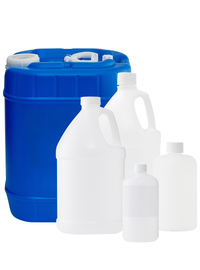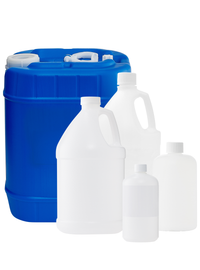Ammonium Acetate
Ammonium Acetate
Crystals And Solutions
Ammonium Acetate products are available commercially in bulk sizes and ship in 1-2 business days. Lab Alley Brand Ammonium Acetate is used for chemical analysis, mass spectrometry, HPLC and DNA extraction.
About Ammonium Acetate
Ammonium Acetate is a white, crystalline (sand-like) solid with a slight vinegar-like odor. It is used in chemical analysis, textile dyeing, and preserving meats. It is a white, hygroscopic solid and can be derived from the reaction of ammonia and acetic acid. Ammonium is a weak acid, and acetate is a weak base. Ammonium Acetate has a molar mass of 77.0825 g/mol.
Ammonium acetate, also known as spirit of Mindererus in aqueous solution, is a chemical compound with the formula NH₄CH₃CO₂. It is a white, hygroscopic solid and can be derived from the reaction of ammonia and acetic acid. It is available commercially.
- Formula: C₂H₇NO₂
- Molar mass: 77.0825 g/mol
- IUPAC ID: Ammonium ethanoate
- Density: 1.17 g/cm³
- Melting point: 237.2°F (114°C)
- PubChem CID: 517165
Ammonium acetate appears as a white crystalline solid. The primary hazard is the threat to the environment. Immediate steps should be taken to limit its spread to the environment. It is used in chemical analysis, in pharmaceuticals, in preserving foods, and for other uses.
Ammonium acetate is an ammonium salt obtained by reaction of ammonia with acetic acid. A deliquescent white crystalline solid, it has a relatively low melting point (114℃) for a salt. Used as a food acidity regulator, although no longer approved for this purpose in the EU. It has a role as a food acidity regulator and a buffer. It is an acetate salt and an ammonium salt.
Ammonium acetate powder is a reagent that is used in laboratories for chromatographic analysis of various compounds such as oligos, proteins, and peptides. It is used with acetic acid to provide a buffer solution. It behaves as a catalyst in many reactions like Knoevenagel, Borch. It is used as a nutrient additive.







